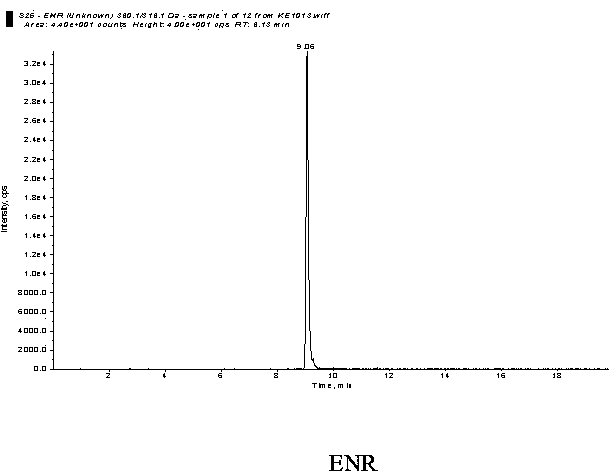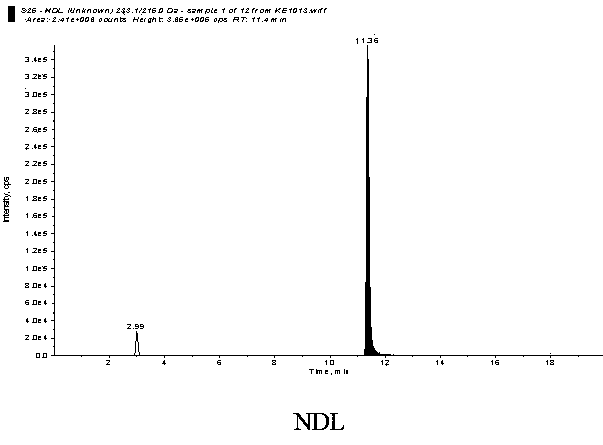Method for determinating seven kinds of quinolone residues in animal-source food through membrane dialysis-high performance liquid chromatography and tandem mass spectrometry
A technology of high-performance liquid chromatography and tandem mass spectrometry, which is applied to measuring devices, analytical materials, instruments, etc., to achieve the effects of simple sample processing, good reproducibility, and high sensitivity
- Summary
- Abstract
- Description
- Claims
- Application Information
AI Technical Summary
Problems solved by technology
Method used
Image
Examples
Embodiment Construction
[0015] In order to specifically illustrate the present invention, the following examples are used for specific illustration, but the present invention is not limited thereto.
[0016] 1. Preparation of Dialysis Bags
[0017] Cut the dialysis membrane into small pieces of appropriate length (about 10cm), wash the dialysis membrane thoroughly with distilled water, put the unused dialysis membrane back into the storage solution, keep it sealed, and wear gloves when touching the dialysis membrane. When in use, one end is clamped with a sinking dialysis bag clip, and after filling with water, pressurize properly with your fingers to check that there is no leakage before loading the sample. Usually, one-third to one-half of the space should be reserved to prevent excessive water and buffer solution outside the bag from entering the bag during dialysis and bursting the bag. After loading the sample, clamp the mouth of the bag with a floating clamp, and put a glass bead in the bag to...
PUM
 Login to View More
Login to View More Abstract
Description
Claims
Application Information
 Login to View More
Login to View More - R&D
- Intellectual Property
- Life Sciences
- Materials
- Tech Scout
- Unparalleled Data Quality
- Higher Quality Content
- 60% Fewer Hallucinations
Browse by: Latest US Patents, China's latest patents, Technical Efficacy Thesaurus, Application Domain, Technology Topic, Popular Technical Reports.
© 2025 PatSnap. All rights reserved.Legal|Privacy policy|Modern Slavery Act Transparency Statement|Sitemap|About US| Contact US: help@patsnap.com



